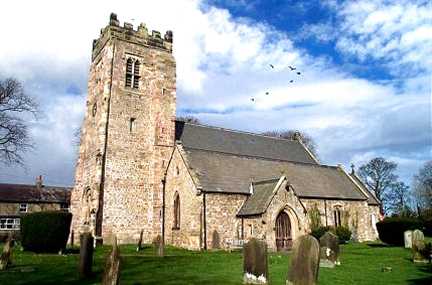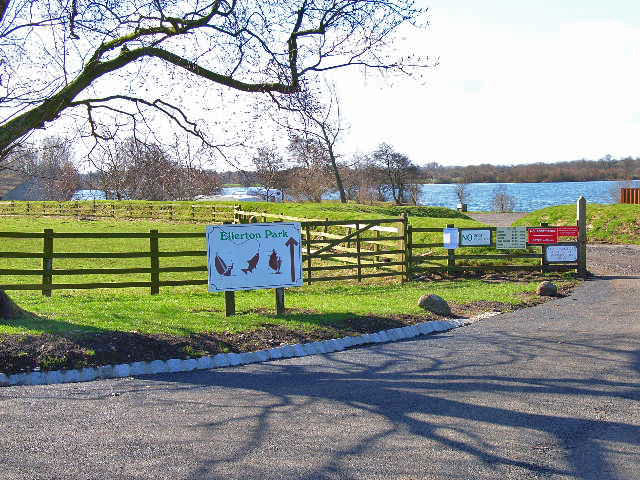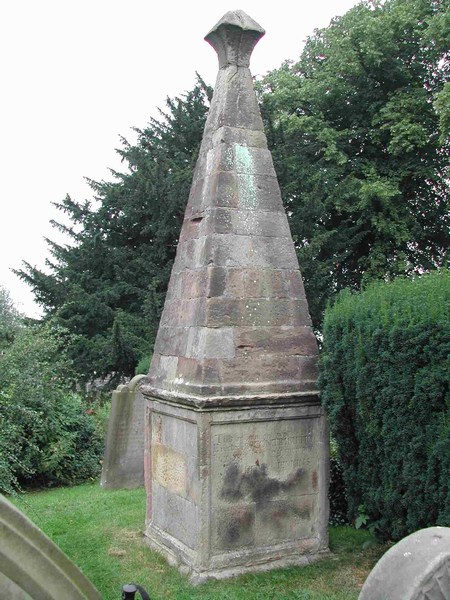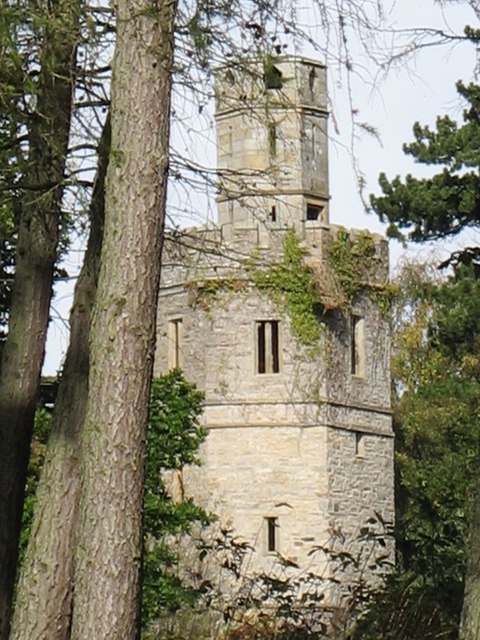|
Bolton-on-Swale
Bolton-on-Swale is a village and civil parish in the Richmondshire district of North Yorkshire, England. In 2015, North Yorkshire County Council estimated the population of the civil parish to be 70. History The village is mentioned in the ''Domesday Book'' as ''Boletone'' and belonged to Count Alan of Brittany as Tenant-in-Chief. The manor had been granted by Count Alan to ''Thor'' at the time of the Norman invasion, but afterwards it was granted to ''Enisant Musard''. The manor was passed to ''Roald the Constable'' thereafter until it came into the possession of the ''Scrope'' family in Masham. They held the titles until around 1630. The descent is somewhat confused after this, but the title was seen to be in use in the 18th century by the ''Burton'' and ''Garthwaite'' families. In 1820 the title was in use by the Earl of Tyrconnell. The etymology of the name derives from the Old English ''bōðl-tūn'', meaning ''an enclosure with buildings''. Governance The village lies ... [...More Info...] [...Related Items...] OR: [Wikipedia] [Google] [Baidu] |
Ellerton-on-Swale
Ellerton-on-Swale or Ellerton (historically known as Ellerton-upon-Swale) is a small village and civil parish about a mile east of Catterick in the Richmondshire district of North Yorkshire, England. In 2015, North Yorkshire County Council estimated the population of the parish at 110. At the 2011 census, the population of the parish was included with Bolton-on-Swale) and not counted separately. The village sits just south of the B6271 road between Richmond and Northallerton, and has a large lake used for diving between the settlement and the River Swale to the south. Another lake to the west, Bolton-on-Swale Lake, is a former sand and gravel quarry and is now a Yorkshire Wildlife Trust sponsored nature reserve. The village has an entry in the Domesday Book Domesday Book () – the Middle English spelling of "Doomsday Book" – is a manuscript record of the "Great Survey" of much of England and parts of Wales completed in 1086 by order of King William I, known as W ... [...More Info...] [...Related Items...] OR: [Wikipedia] [Google] [Baidu] |
Henry Jenkins (supercentenarian)
Henry Jenkins (buried on 9 December 1670 in Bolton-on-Swale, North Riding of Yorkshire) was an English supercentenarian claimant said to have been 169 years old at his death. Biography He claimed to have been born in 1501, although parish registers were not required to be maintained until 1538. It is known that he lived at Ellerton on Swale, Scorton, North Riding of Yorkshire and claimed to have been butler to Lord Conyers, of Hornby Castle, where the Abbot of Fountains was a frequent guest, and "did drink a hearty glass with his Lordship." He later followed the occupation of a fisherman and ended his life begging for alms. Chancery Court records show that in 1667 Jenkins stated on oath that he was aged "one hundreth fifty and seven or thereabouts"; when asked by the judge which notable battle he remembered, he named Flodden Field of 1513 and claimed to have carried arrows to the English archers. Although his birth date is undocumented, the date of Jenkins's dea ... [...More Info...] [...Related Items...] OR: [Wikipedia] [Google] [Baidu] |
Scorton, North Yorkshire
Scorton is a village and civil parish in the Richmondshire district of North Yorkshire, England. It is approximately north-west of the county town of Northallerton. History The village is mentioned in ''Domesday Book'' as "Scortone" in the lands of Count Alan of Brittany, who was tenant-in-chief during the Norman invasion. Before the invasion the manor was granted to ''Thorfin of Ravensworth'' but subsequently granted in 1086 to ''Bodin, brother of Bardulf''. The manor was thereafter split into two parts, the larger granted to the ''Fitz Hugh'' family and the smaller to the ''Fitz Alans''. The descent of the larger part of the manor followed that of the manor of Kirkby Ravensworth until 1512 when it came into the ''Fiennes'' family, who were entitled as ''Baron Dacre''. In 1600 the manor was left to ''Charles Tankard'' and ''Christopher Jeynes'', who had sold it to ''Leonard Wastell'' by 1616. Towards the end of the 18th century the manor passed to the '' Earl of Tyrconnel'' ... [...More Info...] [...Related Items...] OR: [Wikipedia] [Google] [Baidu] |
Catterick, North Yorkshire
Catterick () is a village, civil parish and electoral ward in the Richmondshire district of North Yorkshire, England. Historically part of the North Riding of Yorkshire, it is north-west of the county town of Northallerton just to the west of the River Swale. It lends its name to nearby Catterick Garrison and the nearby hamlet of Catterick Bridge, the home of Catterick Racecourse where the village Sunday market is held. It lies on the route of the old Roman road of Dere Street and is the site of the Roman fortification of Cataractonium. Toponymy The etymology of the name is derived from the Latin place name "Cataractonium", which looks like a Latin/Greek mixture meaning "place of a waterfall", but it might have been a Roman misunderstanding of the Celtic name ''Catu-rātis'' meaning "battle ramparts", as partly supported by the spelling Κατουρακτονιον (Catouractonion) on the Ptolemy world map. History The place is mentioned in Ptolemy's Geographia of as a l ... [...More Info...] [...Related Items...] OR: [Wikipedia] [Google] [Baidu] |
Forest, North Yorkshire
Forest is a hamlet in North Yorkshire, England, near the town of Richmond. It is near the villages of Scorton and Bolton-on-Swale. The only public amenity in Forest is a red telephone box. Forest is not served by any public transport Public transport (also known as public transportation, public transit, mass transit, or simply transit) is a system of transport for passengers by group travel systems available for use by the general public unlike private transport, typical .... References External links Villages in North Yorkshire {{richmondshire-geo-stub ... [...More Info...] [...Related Items...] OR: [Wikipedia] [Google] [Baidu] |
List Of Civil Parishes In North Yorkshire
This is a list of civil parishes in the ceremonial county of North Yorkshire, England, including Stockton-on-Tees (south of the river). There are 773 civil parishes, most of the county being parished. Unparished areas include the former Harrogate Municipal Borough, except for Pannal and Burn Bridge, parts of the former Teesside County Borough, part of the former Scarborough Municipal Borough and the former York County Borough. For the part of the Borough of Stockton-on-Tees north of the River Tees, see List of civil parishes in County Durham. Population figures are unavailable for some of the smallest parishes. See also * List of civil parishes in England References External links Office for National Statistics : Geographical Area Listings {{North Yorkshire North Yorkshire Civil parishes In England, a civil parish is a type of administrative parish used for local government. It is a territorial designation which is the lowest tier of local government below ... [...More Info...] [...Related Items...] OR: [Wikipedia] [Google] [Baidu] |
George Fowler Jones
George Fowler Jones (25 January 1818 – 1 March 1905) was an architect and early amateur photographer who was born in Scotland but based for most of his working life in York. Biography and work Jones was born in Inverness in 1818. He studied under architect William Wilkins, the designer of Yorkshire Museum and the National Gallery, assisting him with the plates for his work on Vitruvius; then in around 1839 in London under Sir Sydney Smirke. When Smirke undertook repairs to the fire-damaged York Minster in the early 1840s, including revolutionary iron roof trusses, he sent Jones to take measurements. Jones liked York enough to move there shortly after. A few years later Jones designed similar iron roof trusses for one of his early commissions, Castle Oliver in Ireland. Jones was elected Fellow of the Royal Institute of British Architects (FRIBA) on 17 February 1868, proposed by Decimus Burton, Sydney Smirke and Ewan Christian. He married firstly Anne, in 1848, the 3rd daught ... [...More Info...] [...Related Items...] OR: [Wikipedia] [Google] [Baidu] |
North Yorkshire
North Yorkshire is the largest ceremonial counties of England, ceremonial county (lieutenancy area) in England, covering an area of . Around 40% of the county is covered by National parks of the United Kingdom, national parks, including most of the Yorkshire Dales and the North York Moors. It is one of four counties in England to hold the name Yorkshire; the three other counties are the East Riding of Yorkshire, South Yorkshire and West Yorkshire. North Yorkshire may also refer to a non-metropolitan county, which covers most of the ceremonial county's area () and population (a mid-2016 estimate by the Office for National Statistics, ONS of 602,300), and is administered by North Yorkshire County Council. The non-metropolitan county does not include four areas of the ceremonial county: the City of York, Middlesbrough, Redcar and Cleveland and the southern part of the Borough of Stockton-on-Tees, which are all administered by Unitary authorities of England, unitary authorities. ... [...More Info...] [...Related Items...] OR: [Wikipedia] [Google] [Baidu] |
Farmstead
A homestead is an isolated dwelling, especially a farmhouse, and adjacent outbuildings, typically on a large agricultural holding such as a ranch or station. In North America the word "homestead" historically referred to land claimed by a settler or squatter under the Homestead Acts (USA) or Dominion Lands Act (Canada). In Old English the term was used to mean a human settlement, and in Southern Africa the term is used for a cluster of several houses normally occupied by a single extended family. In Australia it refers to the owner's house and the associated outbuildings of a pastoral property, known as a station. See also * Homestead principle * Homesteading * List of homesteads in Western Australia * List of historic homesteads in Australia * Settlement hierarchy A settlement hierarchy is a way of arranging settlements into a hierarchy based upon their population or some other criteria. The term is used by landscape historians and in the National Curriculum for Engla ... [...More Info...] [...Related Items...] OR: [Wikipedia] [Google] [Baidu] |
Peel Tower
Peel towers (also spelt pele) are small fortified keeps or tower houses, built along the English and Scottish borders in the Scottish Marches and North of England, mainly between the mid-14th century and about 1600. They were free-standing with defence being a prime consideration of their design with "confirmation of status and prestige" also playing a role. They also functioned as watch towers where signal fires could be lit by the garrison to warn of approaching danger. The FISH Vocabulary ''Monument Types Thesaurus'' lists "pele" alongside "bastle", "fortified manor house" and "tower house" under the broader term "fortified house". Pevsner defines a peel as simply a stone tower. Outside of this, "peel" or "pele" can also be used in related contexts, for example a "pele" or "barmkin" (in Ireland a bawn) was an enclosure where livestock were herded in times of danger. The rustling of livestock was an inevitable part of Border raids, and often their main purpose. In th ... [...More Info...] [...Related Items...] OR: [Wikipedia] [Google] [Baidu] |
Bolton Hall, North Yorkshire
Bolton Hall is a country house near Preston-under-Scar, Richmondshire, North Yorkshire, England, in Wensleydale, some 3 miles (5 km) west of Leyburn. It was built in the late 17th century and rebuilt after a fire in 1902. It is a grade II listed building, as is an 18th-century folly tower in the grounds. It is built in three storeys of roughcast brick with ashlar dressing and a hipped slate roof. The layout is H-shaped with a central block of 5 bays and an overall frontage of 9 bays. In the 1960s the estate covered 12,000 acres, much of it moorland and woodland, and included Bolton Castle. History The Bolton estate belonged to the Scrope family since medieval times, based on Bolton Castle. After the death in 1630 of Emanuel Scrope, 1st Earl of Sunderland and 11th Baron Scrope of Bolton, without any legitimate children, the estate was inherited by Mary, the eldest of his three illegitimate daughters. She married Charles, Marquess of Winchester. Bolton Hall ... [...More Info...] [...Related Items...] OR: [Wikipedia] [Google] [Baidu] |
Vestry
A vestry was a committee for the local secular and ecclesiastical government for a parish in England, Wales and some English colonies which originally met in the vestry or sacristy of the parish church, and consequently became known colloquially as the "vestry". Overview For many centuries, in the absence of any other authority (which there would be in an incorporated city or town), the vestries were the sole ''de facto'' local government in most of the country, and presided over local, communal fundraising and expenditure until the mid or late 19th century using local established Church chairmanship. They were concerned for the spiritual but also the temporal as well as physical welfare of parishioners and its parish amenities, collecting local rates or taxes and taking responsibility for numerous functions such as the care of the poor, the maintaining of roads, and law enforcement, etc. More punitive matters were dealt with by the manorial court and hundred court, and latter ... [...More Info...] [...Related Items...] OR: [Wikipedia] [Google] [Baidu] |








